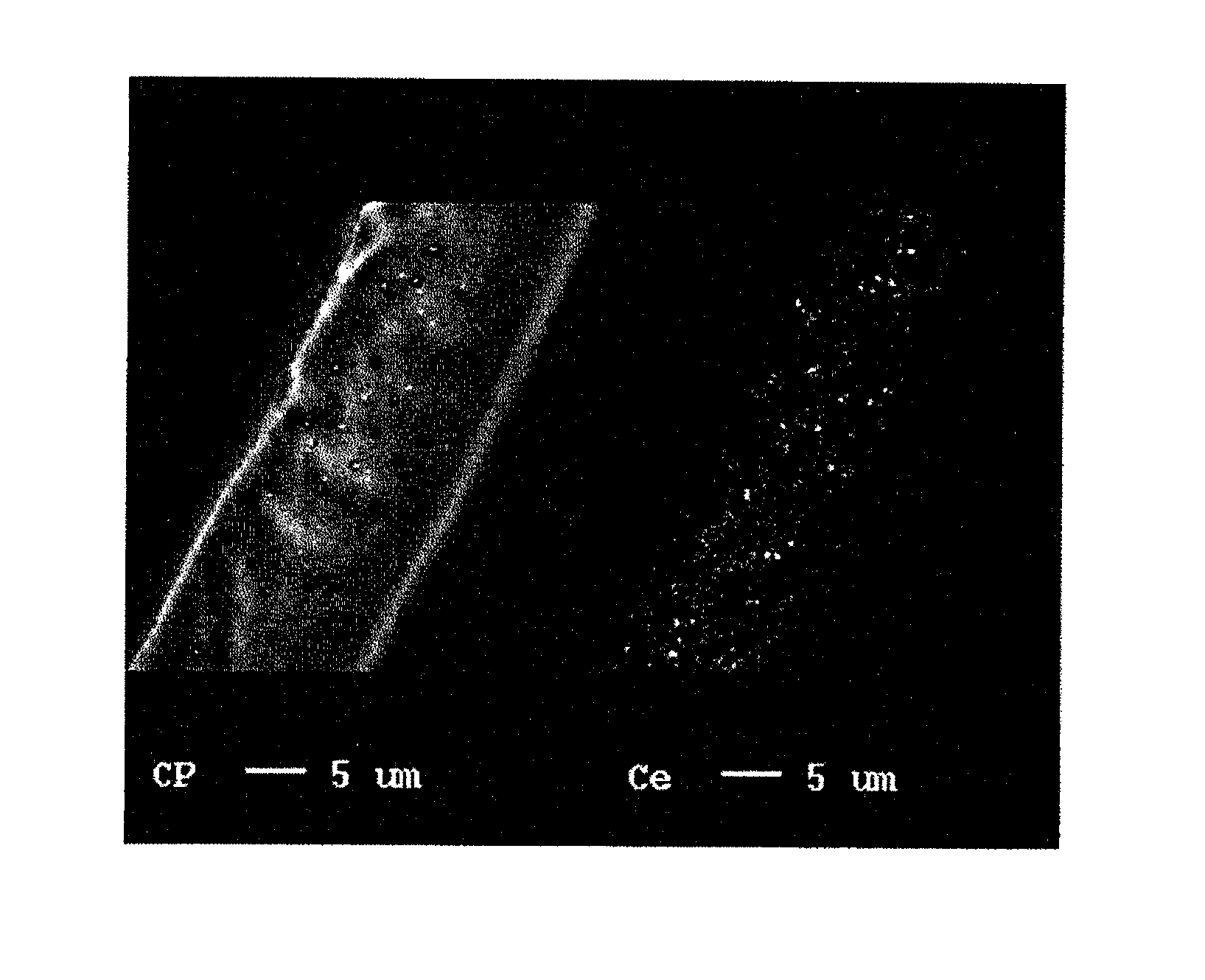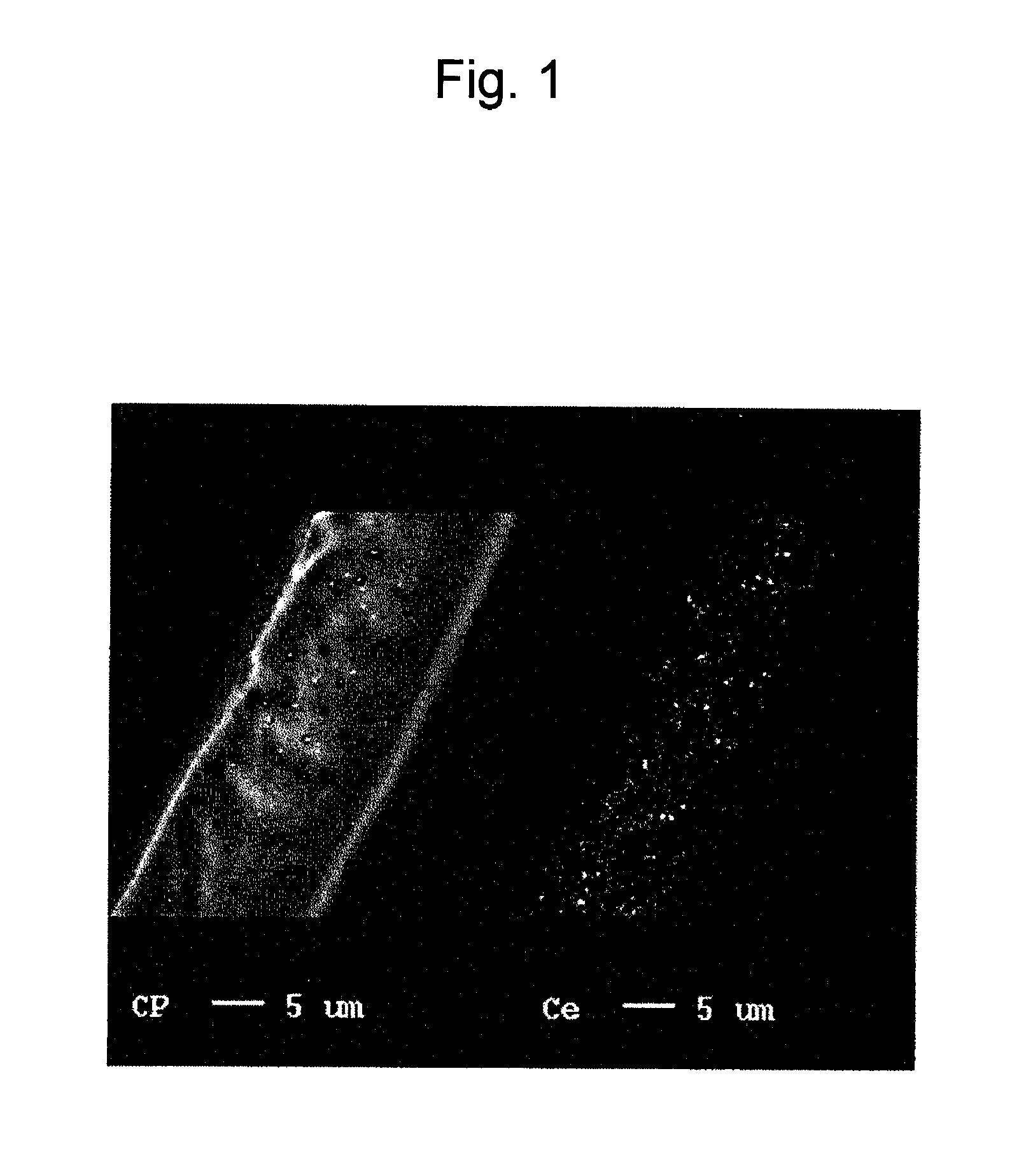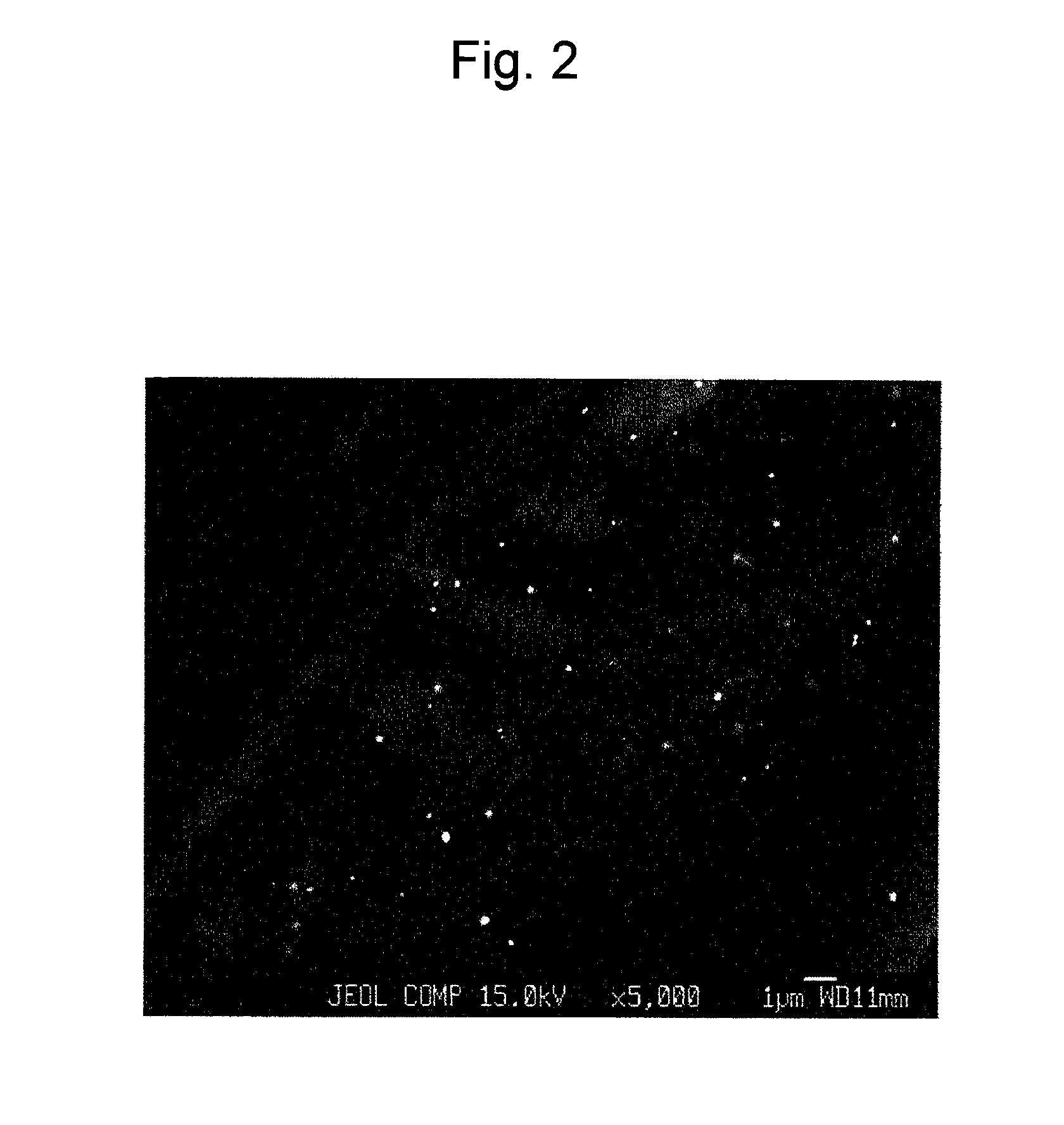Reinforced electrolyte membrane for fuel cell, membrane-electrode assembly for fuel cell, and polymer electrolyte fuel cell comprising the same
a fuel cell and electrolyte technology, applied in the direction of conductors, sustainable manufacturing/processing, final product manufacturing, etc., can solve the problems of excessive reduction of membrane thickness, pinhole formation, membrane breakage, etc., to reduce the amount of eluted fluorine ions, improve durability, and excellent durability
- Summary
- Abstract
- Description
- Claims
- Application Information
AI Technical Summary
Benefits of technology
Problems solved by technology
Method used
Image
Examples
examples
[0064]The Example and the Comparative Examples of the present invention are described below.
[0065]Porous substrates used for the Example and the Comparative Examples were prepared by subjecting PTFE tape to biaxial stretching for advanced fibrillation in accordance with the method described below.
[0066]An extrusion aid (IsoperK, Exxon) was added to a PTFE fine powder (PTFE601A, Dupont) so as to result in a content of 285 mg of the aid per 1 kg of the PTFE fine powder. The PTFE fine powder to which the extrusion aid had been added was compressed so as to be formed into a cylindrical shape. The resultant was extruded with a ram extruder such that tape was formed. The extruded tape was rolled by mill rolls to a thickness of approximately 20 μm. The extrusion aid was removed from the rolled tape with the use of a fan oven at 210° C.
[0067]Next, the temperature was adjusted to a stretching temperature in the length direction listed in table 1 below. Stretching between banks of rolls in a ...
example
[0069]The prepared porous substrate was impregnated with a liquid obtained by dispersing CeO2 powder (Kojundo Chemical Lab Co., Ltd.; product name: “CEO05PB”; average particle size: 0.2 μm), which had been previously weighed to adjust the content thereof in a membrane to 7 μg / cm2, in a liquid mixture of a perfluoro carbon sulfonate resin (Nafion solution (DE2020)) / alcohol solvent (ethanol or 1-propanol) and water (referred to as a “dispersion liquid of polyelectrolyte”).
[0070]The porous substrate was fixed in a fixation frame so as not to contract. The above dispersion liquid of polyelectrolyte containing a CeO2 powder was applied to both sides of each porous substrate, followed by drying with a hair dryer for removal of the solvent. The porous substrate and the fixation frame were dried in an oven at 180° C. for 8 minutes. Each porous substrate with the corresponding fixation frame was removed from the oven. The porous substrate was separated from the fixation frame.
[0071]The thus ...
PUM
| Property | Measurement | Unit |
|---|---|---|
| tensile strength | aaaaa | aaaaa |
| relative humidity | aaaaa | aaaaa |
| time | aaaaa | aaaaa |
Abstract
Description
Claims
Application Information
 Login to View More
Login to View More - R&D
- Intellectual Property
- Life Sciences
- Materials
- Tech Scout
- Unparalleled Data Quality
- Higher Quality Content
- 60% Fewer Hallucinations
Browse by: Latest US Patents, China's latest patents, Technical Efficacy Thesaurus, Application Domain, Technology Topic, Popular Technical Reports.
© 2025 PatSnap. All rights reserved.Legal|Privacy policy|Modern Slavery Act Transparency Statement|Sitemap|About US| Contact US: help@patsnap.com



